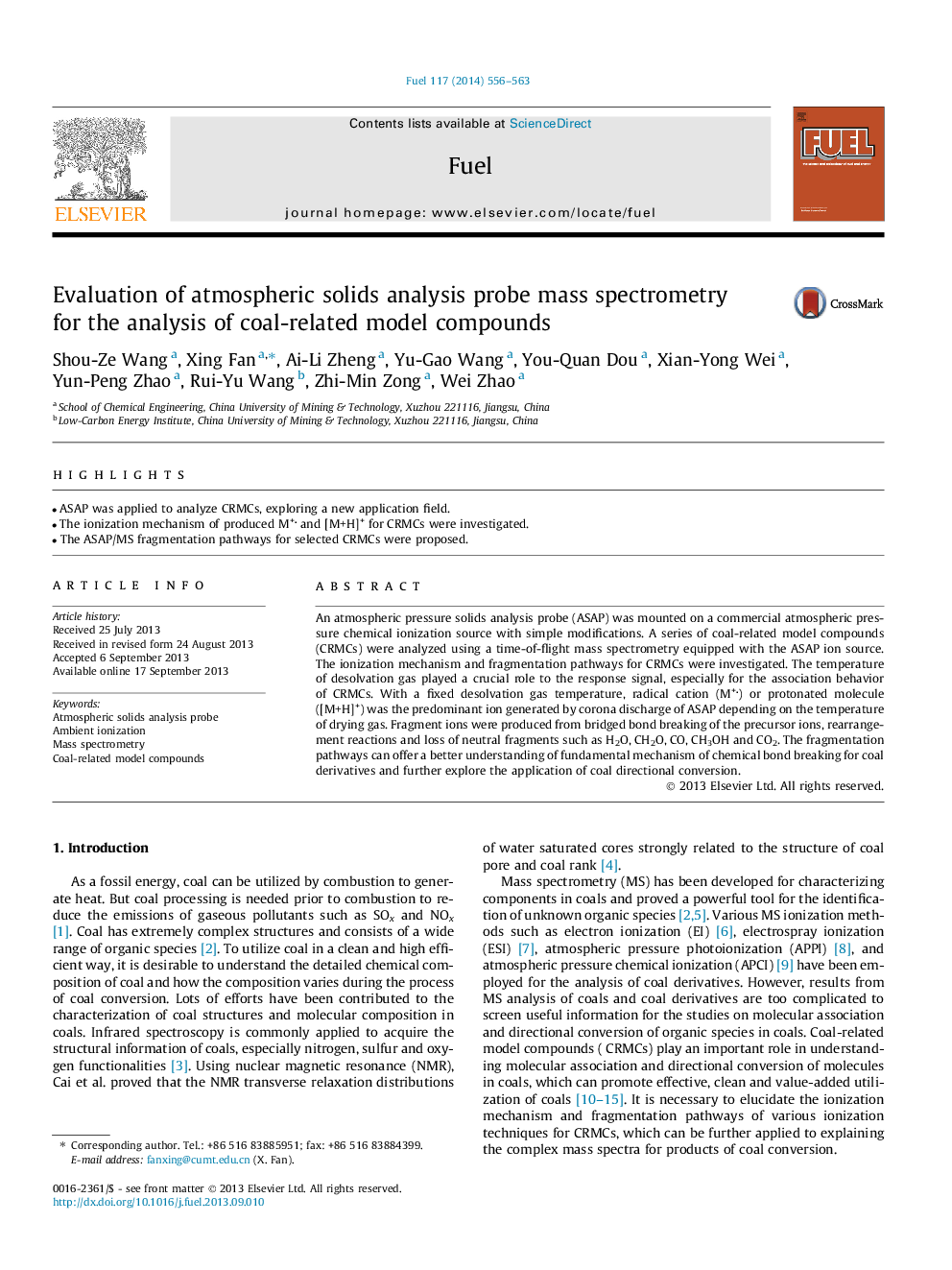| Article ID | Journal | Published Year | Pages | File Type |
|---|---|---|---|---|
| 10272047 | Fuel | 2014 | 8 Pages |
Abstract
An atmospheric pressure solids analysis probe (ASAP) was mounted on a commercial atmospheric pressure chemical ionization source with simple modifications. A series of coal-related model compounds (CRMCs) were analyzed using a time-of-flight mass spectrometry equipped with the ASAP ion source. The ionization mechanism and fragmentation pathways for CRMCs were investigated. The temperature of desolvation gas played a crucial role to the response signal, especially for the association behavior of CRMCs. With a fixed desolvation gas temperature, radical cation (M+) or protonated molecule ([M+H]+) was the predominant ion generated by corona discharge of ASAP depending on the temperature of drying gas. Fragment ions were produced from bridged bond breaking of the precursor ions, rearrangement reactions and loss of neutral fragments such as H2O, CH2O, CO, CH3OH and CO2. The fragmentation pathways can offer a better understanding of fundamental mechanism of chemical bond breaking for coal derivatives and further explore the application of coal directional conversion.
Keywords
Related Topics
Physical Sciences and Engineering
Chemical Engineering
Chemical Engineering (General)
Authors
Shou-Ze Wang, Xing Fan, Ai-Li Zheng, Yu-Gao Wang, You-Quan Dou, Xian-Yong Wei, Yun-Peng Zhao, Rui-Yu Wang, Zhi-Min Zong, Wei Zhao,
